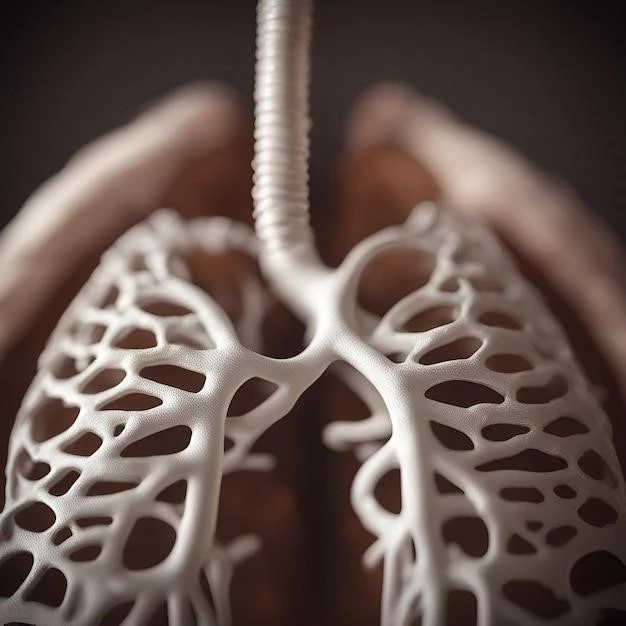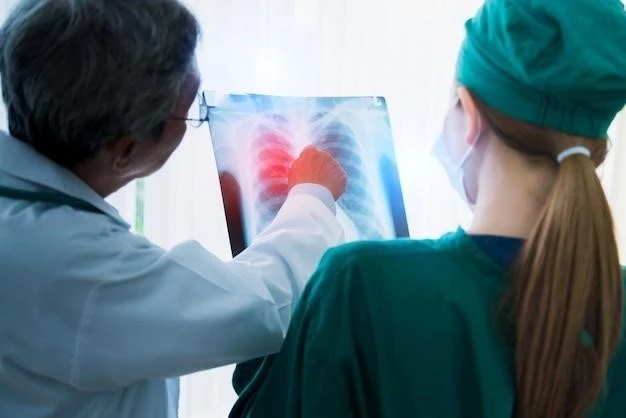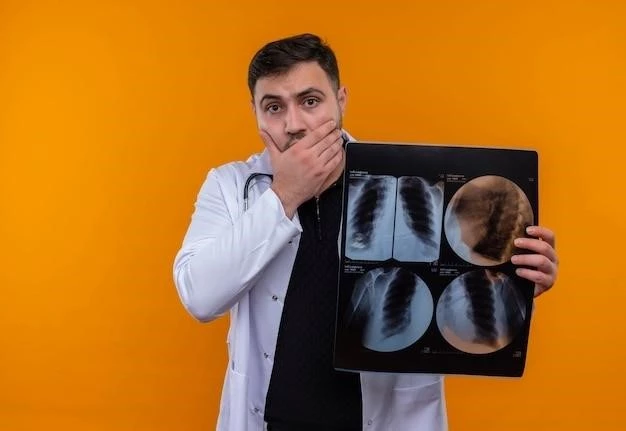Introduction
Tracheobronchomegaly is a distinct clinical and radiologic entity characterized by marked dilation of the trachea and bronchi. In this report we describe a Marfanoid patient who developed TBM in his adulthood with rapid deterioration, leading to hypercapnic respiratory failure.
Overview of Tracheobronchomegaly
Tracheobronchomegaly refers to a distinct clinical and radiologic condition characterized by significant dilation of the trachea and bronchi. This rare entity may present with symptoms such as recurrent lower respiratory tract infections and chronic cough. The condition can be associated with congenital disorders like Mounier-Kuhn syndrome, where abnormalities in the trachea and bronchi result in structural weaknesses and increased susceptibility to infections. Despite its rarity, the impact of tracheobronchomegaly on respiratory function and the risk of associated complications warrant attention in clinical practice.
Background Information
Background information on tracheobronchomegaly includes its classification as a distinct clinical and radiologic entity marked by significant tracheal and bronchial dilation. Involvement in conditions like Mounier-Kuhn syndrome further underlines the complexity and impact of this rare disorder on respiratory function;
Understanding Mounier-Kuhn Syndrome
Mounier-Kuhn syndrome, also known as tracheobronchomegaly, is a rare congenital disorder characterized by the dilation of the trachea and main bronchi due to structural abnormalities such as the absence of elastic fibers or thinning of the smooth muscle layer. This leads to increased dead space and reduced secretion clearance, making affected individuals more prone to respiratory infections. The syndrome is distinguished by tracheal and bronchial dilation and is associated with conditions like tracheal diverticulosis and bronchiectasis. Despite its rarity, understanding the etiopathogenesis and clinical implications of Mounier-Kuhn syndrome is essential for accurate diagnosis and management.
Etiology and Pathogenesis
The etiology of tracheobronchomegaly, particularly in the context of Mounier-Kuhn syndrome, involves congenital structural abnormalities such as the absence of elastic fibers in the trachea and main bronchi or thinning of the smooth muscle layer. These abnormalities lead to increased dead space and compromised secretion clearance, predisposing individuals to recurrent respiratory infections. The pathogenesis of tracheobronchomegaly is linked to the weakening of the tracheobronchial wall, resulting in dilation of the membranous and cartilaginous portions of the airways. Understanding the underlying etiology and pathogenesis is crucial for managing this rare condition effectively.
Clinical Features
Not available at this time.
Symptoms of Tracheobronchomegaly
Common symptoms of tracheobronchomegaly include chronic cough, recurrent lower respiratory tract infections, excessive sputum production, and breathing difficulties. Patients may experience wheezing, shortness of breath, and an increased risk of bronchiectasis. Recognizing these symptoms is crucial for timely diagnosis and appropriate management of this rare condition.
Diagnosis and Differential Diagnosis
Diagnosing tracheobronchomegaly typically involves a combination of imaging studies such as computed tomography (CT) scans and bronchoscopy to assess the extent of tracheal and bronchial dilation. Differential diagnosis may include conditions like tracheobronchopathia osteochondroplastica and tracheal diverticulosis, necessitating careful evaluation to differentiate them from tracheobronchomegaly.

Radiologic Findings
Not available at this time.
Imaging Characteristics of Tracheobronchomegaly
Imaging studies play a critical role in assessing tracheobronchomegaly, with features such as marked dilation of the trachea and central bronchi being indicative of the condition. Thin walls, loss of elastic fibers, and the presence of diverticula between cartilaginous rings are key imaging characteristics observed in tracheobronchomegaly. Computed tomography (CT) scans are particularly valuable in visualizing these structural abnormalities and guiding diagnostic interventions.
Role of Computed Tomography (CT) and Bronchoscopy
Computed tomography (CT) plays a vital role in visualizing the structural abnormalities characteristic of tracheobronchomegaly, such as tracheal and bronchial dilation. Bronchoscopy is essential for direct visualization of the airways and obtaining samples for analysis. These diagnostic tools are instrumental in confirming the diagnosis and guiding appropriate management strategies for patients with tracheobronchomegaly.

Management Approaches
Not available at this time.
Treatment Strategies for Tracheobronchomegaly
Various treatment strategies for tracheobronchomegaly may include a combination of bronchodilators for symptom management, pulmonary rehabilitation to improve lung function, and antibiotics for recurrent infections. In severe cases, surgical interventions such as tracheal resection or stenting may be considered to alleviate airway obstruction and improve respiratory outcomes.
Surgical Interventions and Long-term Solutions
Surgical interventions for tracheobronchomegaly may involve tracheal resection or stenting to manage airway obstruction and improve lung function. Long-term solutions aim to alleviate symptoms, prevent complications, and enhance quality of life for individuals with this condition.
Epidemiology and Prevalence
Not available at this time.
Occurrence and Incidence Rates
Tracheobronchomegaly is a rare clinical entity, with fewer than 100 documented cases reported in literature since its initial description in 1932. The syndrome٫ also known as Mounier-Kuhn syndrome٫ presents a challenge in epidemiological studies due to its low prevalence and often overlooked nature on conventional imaging studies. The incidence rates of this condition remain relatively low٫ emphasizing the need for increased awareness and accurate diagnosis in clinical practice.
Prognosis and Complications
Not available at this time.
Impact on Respiratory Function
The impact of tracheobronchomegaly on respiratory function can lead to complications such as chronic cough, wheezing, shortness of breath, and an increased risk of bronchiectasis. These respiratory symptoms can significantly affect the quality of life and may necessitate long-term management strategies to address the functional limitations associated with this condition.
Associated Conditions and Risks
Associated conditions and risks of tracheobronchomegaly may include tracheobronchopathia osteochondroplastica, recurrent lower respiratory tract infections, bronchiectasis, and the potential for airway obstruction. Understanding these associated conditions and risks is essential for comprehensive management and prevention of complications in individuals with tracheobronchomegaly.
Research and Future Directions
Not available at this time.
Ongoing Studies and Research Efforts
Research on tracheobronchomegaly is limited due to its rarity. Ongoing studies aim to explore the etiology, pathogenesis, and optimal management strategies for this condition. Future research directions may include investigating genetic predispositions, improving diagnostic techniques, and evaluating long-term outcomes of different treatment modalities to enhance the care of patients with tracheobronchomegaly.
Case Studies
Not available at this time.
Description of Select Patient Cases
Case studies of tracheobronchomegaly have highlighted the clinical presentation of patients with marked tracheal and bronchial dilation, recurrent lower respiratory tract infections, and chronic cough. These cases underscore the importance of accurate diagnosis, appropriate management strategies, and potential challenges in treating individuals with this rare condition.
Conclusion
Based on the documented cases and research efforts, tracheobronchomegaly remains a rare and complex condition, often challenging in diagnosis and management. Ongoing studies are crucial to enhance understanding and improve outcomes for individuals affected by this unique pulmonary disorder.
Summary of Key Points
Tracheobronchomegaly, a rare clinical entity marked by significant tracheal and bronchial dilation, poses diagnostic challenges and potential recurrent respiratory complications. Ongoing studies aim to enhance understanding and refine management strategies for individuals affected by this unique pulmonary disorder.
